The food industry worldwide has changed significantly in the past few years mainly due to the COVID-19 pandemic. Changing shifts among consumers, increased anxiety about safety, and a move toward ecommerce has fundamentally changed the way food is packaged, distributed, and sold. Reliance on automated food packaging machines is one of the major effects of these transformations.
Producers strive for better operational efficiency, regulatory compliance, and product uniformity, so filling, sealing, and labeling machines have become indispensable. Food companies are now focusing on traceability, shelf appeal, and compliance, which has resulted in increased demand for labeling machine manufacturers. That’s why, in the post-pandemic world, there is greater automation as well as new expectations from packaging lines.
Revised Expectations Amid COVID-19: Safety, Speed, and Hygiene
COVID-19 changed fundamentally how people viewed food, hygiene, and convenience. Preloaded foods with safe seals and clean labels were well received as they gave a feeling of safety. This prompted manufacturers to improve automated systems to reduce manual intervention and provide sterile, sealed, and properly labeled products.
The importance of sealing and labeling has evolved significantly in recent years; they are now considered brand assets as well as parts of compliance requirements. Labels inform buyers of the product’s genuineness, quality, and safety. Labeling must be done with precision, easy to read, and not only must contain vital information, but also aid in the tracking from the factory to the shelf. Such automation using modern labelling machines is now considered normal practice on mid-sized to large food manufacturing lines.
The manufacturers of labelling machines responded by designing systems that work in conjunction with the filling and sealing systems, so companies can increase output without sacrificing quality. Machines with printing and scanning capabilities in real-time help with traceability, which has been crucial during the pandemic for rapid recalls and greater supply chain visibility.
Increase in Automation, Customization, and E-Commerce
Even as some parts of the world appear to return to normal daily life, consumer expectations are still high for speedy and safe packaging as well as transparency. Rapid growth of e-commerce and direct-to-consumer business models has complicated food packaging even further. Products are now shipped longer distances, go through more hands than before, and are often tailored to specific hard to please audiences. Because of these changes, the demand for flexible automated packaging systems that can adjust to changes in batch sizes, packaging styles, and labeling became even greater.
In this evolving environment, can labeling machines and labelling machine manufacturers have become central to packaging solutions—especially in the beverage and ready-to-drink segments. These machines label a wide variety of can sizes in an identical manner and form while meeting the regulations, and more importantly, the consistency of data. These systems are perfect for modern, flexible production lines because they come with digital printing, variable data management, and fast changeover capabilities.
In addition, contemporary labeling machines offer proactive assistance in regional compliance such as allergen or nutrition labeling. When brands enter new markets, the ability to modify labels swiftly becomes a necessity for operations. Automated systems enable this in little or no time with an enhanced speed in responding to market changes, however, productivity is not compromised.
Increased Productivity and Proactive Cost Management
Supply chains and labor availability were no match for the pandemic. This has caused multiple manufacturers to rethink their operations. Automation was not only a safety measure but also a means of controlling costs and future business operations. These food packaging machines such as automated labelers help minimize dependency on human labor while drastically reducing error margins and ensuring standards are stuck regardless of workforce fluctuations.
Systems for high-performance labeling can now do hundreds of units per minute with accurate placement and high precision. In addition, they can be connected to other packaging machinery to create fully automated lines. This type of integration makes processes more efficient, minimizes the need for reworking parts of the product, and improves product throughput.
The versatility of these machines is essential. Most manufacturers of semi automatic labeling machines now provide modular designs, so companies can invest just a little bit and grow over time. Businesses can expand as product lines increase or become more complex by incorporating additional labeling heads, printers or inspection systems without having to throw away the entire system.
These advantages are of great interest to small and medium enterprises in desperate needs to maintain competitiveness without straining a tight budget. Automation allows them to respond to retailer demands, keep up with consumer trends, and maintain high operational standards like all other large enterprises.
The Need for Innovation in Sustainability
Another important reason why food packaging machines are designed and used differently these days is sustainability. Modern consumers are more eco conscious than before and are advocating for recyclable, compostable or reusable packaging which collapses. This means that for food producers these shifts means newer materials and designs which may not be supported by traditional machinery.
The shift toward eco-friendly packaging affects sealing strength, label adhesion, and substrate flexibility. Labelling systems must keep pace with these challenges, applying labels to unorthodox surfaces in a way that delivers clear information, as well as adheres cleanly. Many labelling machine manufacturers with precision controls, advanced sensors, and software that is material-change adaptive are already developing machines to satisfy this need.
Moreover, smart labeling—with QR codes or RFID labels—is becoming more common. Brands can directly provide customers with information related to sourcing, sustainability metrics, or recycling instructions. Automated labeling machines allow this on a mass scale through the integration of printing, verifying, and placing the label in one continuous workflow.
It’s important to note that, while modernizing these systems helps maintain compliance, it directly enhances company relevance. As tighter packaging regulation develops, and eco-labeling evolves, companies investing in innovative packaging equipment are positioned in the long-run for sustainable growth.
Conclusion
Attributing the increased demand for food packaging machines to a temporary crisis would be shortsighted—there has been a structural development towards smarter, safer, and efficient manufacturing systems. With the post-pandemic emphasis placed on hygiene, traceability, and operational resilience, food manufacturers need automated solutions that provide reliable and scalable packaging solutions—these are at the forefront of the shift toward automation.
Each stage of the packaging now has added emphasis right from sealing to labeling. And with increasing expectations from food brands, there is heavy reliance on precision, compliance, and flexibility offered by labelling machine manufacturers which have done everything to help brands achieve their goals.
Competitive edge makes labeling machines, not simple technical machines for investment, which is adapting to sustainable packaging, expanding product lines, or ensuring every label is accurate and secure. For businesses looking to succeed in this new era of packaging, collaboration with innovative labeling machine manufacturers is what guarantees production line sustainability.

